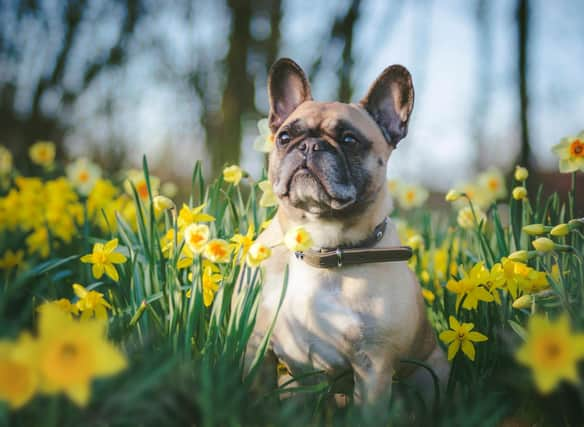Spring flowers that are dangerous to dogs and what to do if your pup is poisoned - from deadly daffodils to toxic tulips


With penty of us welcoming a new four-legged friend into our family over the last year – the UK’s population of dogs is now estimated to be over 12.5 million – lots of dog owners will be experiencing their first spring with their new pet.
What many first timers may not know, along with some more seasoned dog owners, is that some common spring plants can be very dangerous to pooches.
Advertisement
Hide AdAdvertisement
Hide AdAnd with so many dogs roaming the British hillsides and gardens, it’s important to keep them from nibbling on these spring flowers and their bulbs.
WIth this in mind, dog-friendly letting specialist Canine Cottages have teamed up with accredited dog trainer Joe Nutkins to share five poisonous spring flowers that could be dangerous to your dog – and what you should do if you find your dog ingesting a poisonous flower or its bulb.
Tulips
These beautiful flowers are often found in many homes but are proven to be extremely poisonous to pets. It is wise to not let your dog near this plant, especially the bulb, which is the most poisonous part. Symptoms of an ingested tulip include vomiting, drooling and diarrhoea. Even drinking the flowerpot water can prove poisonous to dogs.
Daffodils
Similar to tulips, daffodils can prove dangerous, with vomiting, salivating and cardiac arrythmia among the worst symptoms. If you have a dog, it would be wise to keep these plants in a secure location where the dog cannot reach them.
Snowdrops
These small flowers can cause quite a bit of damage to your pooch if ingested. It’s the bulb of this plant that is the real danger, so if you have a pooch that loves digging, it would be smart to remove them from your garden. While the bulb is the worst, the rest of the plant can cause your dog to become very poorly too, with symptoms like vomiting and diarrhoea occurring within a short time.
Bluebells
The common bluebell can be found across Britain’s woodland and is among the plants that are poisonous to dogs. This plant grows close to the ground and is easy for dogs to bite. Symptoms of ingesting this plant are very similar to previous plants, so make sure to note the flowers you see in case you need to reiterate what your pooch has eaten to your vet.
Crocus
This flower is a true sign spring is here but is also very poisonous to your pooch. In the worst cases, this flower can cause organ failure if ingested, as well as symptoms like vomiting, bloody diarrhoea and salivating. If you spot your dog eating one of these flowers, call your vet immediately.
What to do if your dog eats a poisonous flower
Typically, dogs would avoid eating a plant that they instinctively know is poisonous to them, more so when most of the plant, or all of it, will be dangerous.
Advertisement
Hide AdAdvertisement
Hide AdIf your dog does manage to eat a plant or flower that is known to be toxic to dogs, call your vets while getting ready to take your dog directly to them.
Calling your vet while you are on your way, or asking someone else to call them for you, means they can get everything ready for your arrival and help your dog sooner. If you are not near your own vet, look up a local vet if you haven’t already located one in advance and let them know you’re on your way.
If your dog eats a plant you suspect is poisonous or toxic, you can contact the Veterinary Poisons Information Service on 01202 509 000.
They have information to hand that includes what plant your dog has eaten or a description of what it looks like – including the colour and any leaves, flowers or berries, as well as the size of your dog, and how much has been eaten. The hotline isn’t free but will be able to give you advice on whether your dog needs the vets urgently or not.
Read more
A message from the Editor:
Advertisement
Hide AdAdvertisement
Hide AdThank you for reading this article. We're more reliant on your support than ever as the shift in consumer habits brought about by Coronavirus impacts our advertisers.
If you haven't already, please consider supporting our trusted, fact-checked journalism by taking out a digital subscription.
Comments
Want to join the conversation? Please or to comment on this article.